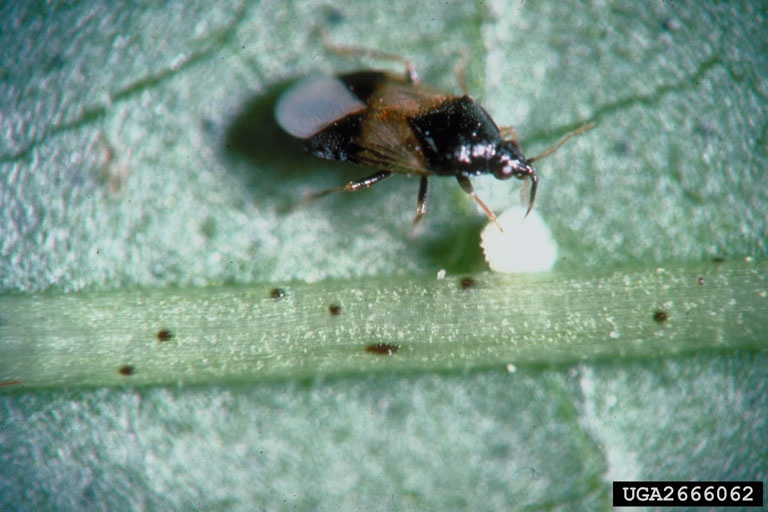
Features
Biocontrols
Inputs
Pirate bug tag-team is double-trouble for thrips
November 18, 2009 By By Jan Suszkiw ARS
 NEWS HIGHLIGHT
NEWS HIGHLIGHT
Pirate bug tag-team is double-trouble for thrips
The minute pirate bug, Orius insidiosus, was
formerly thought to work alone, but now it appears this tiny agricultural ally of commercial growers and home gardeners may have a partner.
Nov. 18, 2009 – The minute pirate bug, Orius insidiosus, was
formerly thought to work alone, spearing its prey with a long, needle-like beak
and sucking out its victim’s juices. But now it appears this tiny agricultural
ally of commercial growers and home gardeners may have a partner: O. pumilio, a
closely related species found hunting with it on an organic farm in Alachua
County in north-central Florida.

|
|
Minute pirate bug, Orius insidiosus.
|
The 2008 discovery by Agricultural Research
Service (ARS) scientists, reported in the June 2009 issue of Florida
Entomologist, marks the first time the two pirate bug species have been
observed prowling the same “hunting grounds”—the flowers of a crop of false
Queen Anne’s lace—and stalking the same prey: Frankliniella bispinosa (Morgan),
also known as Florida flower thrips.
Although O. insidiosus occurs throughout the
United States and is used commercially to biologically control myriad crop
pests, O. pumilio is a little-known species whose U.S. range until now had only
been documented in south Florida, notes Jeff Shapiro. He’s an entomologist with
the ARS Center for Medical, Agricultural and Veterinary Entomology in
Gainesville, Fla.
Specimens collected from the Alachua County
organic farm showed that O. insidiosus outnumbered O. pumilio by more than
three to one. And yet both species preyed on thrips without apparent rivalry.
Was this a case of insect magnanimity on the part of O. insidiosus? No, the
more likely reason was the abundance of thrips on the flowers, reports Shapiro.
Along with ARS colleagues and the organic
farmer, Shapiro also observed that O. insidiosus males outnumbered females
almost three to one—though for reasons yet unknown—while O. pumilio’s sex ratio
was even. Additional collections and field surveys are under way to track other
cases of coexistence and learn more about O. pumilio and its distribution.
Ultimately, such information could yield new conservation strategies for
bolstering the bugs’ numbers or improving their effectiveness as commercial
biocontrol agents.
Jan Suszkiw is a communications specialist with ARS, the principal
intramural scientific research agency of the U.S. Department of Agriculture.
Print this page